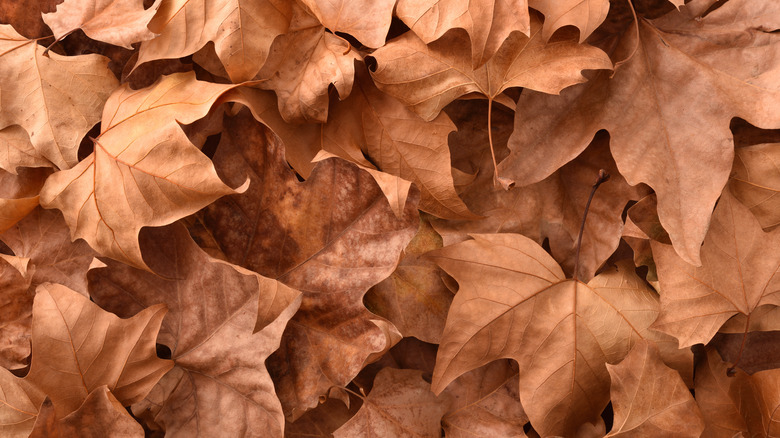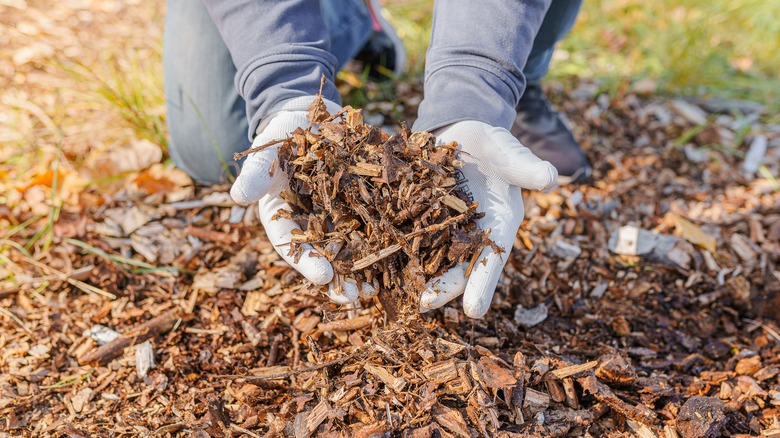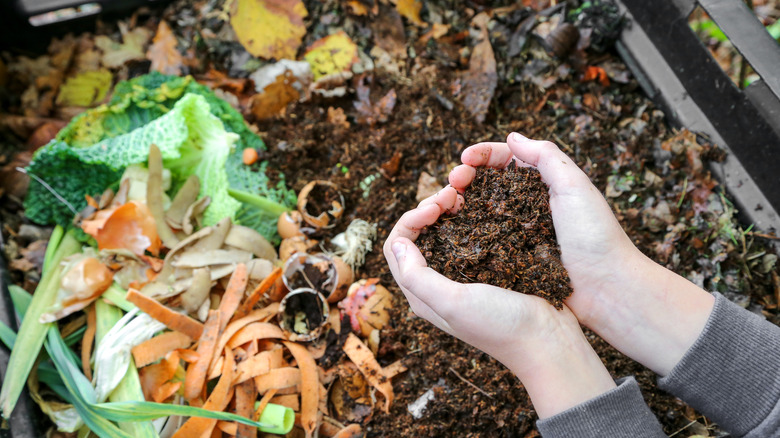Creative Ways To To Dispose Of Dead Leaves In Fall
If you're in a state that experiences autumn, you've probably started noticing the leaves changing colors and accumulating on the ground. Generally, they begin to fall toward the end of October and finish by early December, per Earth Works. This means you have roughly a month and change to experience the beauty of yellow and orange foliage littering your yard until the very last few have fallen. By the end of the season, though, you're left with a yard full of dead undergrowth, so what should you do with it all?
For starters, it's important to dispose of the leaves before snow begins to fall, as they can suffocate your grass and prevent it from growing back in the spring, according to the University of Minnesota. Additionally, forgetting to rake this buildup can leave you stricken with snow mold diseases, which can cause sneezing, coughing, and burning eyes, among other symptoms. Now, you could just bag them up for the yard waste collectors, or you can try one of these creative ways of disposal.
Use them as mulch for your garden
Rather than simply discarding these pretty leaves, use them as mulch for your garden to improve the soil quality. As organic matter, they are extremely beneficial to soil and allow for better overall water and air movement, the University of Minnesota explains.
Plus, the best part about using dead undergrowth as mulch is that it's absolutely free. You can distribute it in two ways: using a mulching mower or chopping up the leaves with a chipper or shredder. Regardless of the method, make sure they're in small pieces before adding them to the soil.
Using leaves as mulch also reduces the need for fertilizing and enhances the soil's fertility and organic content, says Gardening Know How. Not to mention, it prevents weeds from growing, so you don't have to use harmful chemicals to keep them away. As the leaves decompose, you'll need to add more to replace them for mulching purposes.
Add leaves to your compost bin
Similarly, you can use dead leaves in your compost. Even though they don't possess high levels of nutrients, the few they do have are enough to benefit your soil, which, in turn, affects the quality of your plants, according to the UC Master Gardeners of Stanislaus County. When adding lawn clippings to your compost, doing so can stop the composting process if these materials become too smothered. But by using dead leaves, the process continues and the clippings stay nice and fluffy. Depending on how much time you want to spend compositing, you have one of two options.
The so-called slow method takes about a year and requires the least amount of effort. All you have to do is create a compost pile, add your dead leaves, and let everything sit for 12 months. However, the nutrients in the compost will need to survive low temperatures and rainfall (via the UC Master Gardeners of Stanislaus County). If they don't, weeds and disease-producing organisms will continue to live, and they'll end up in your garden. Conversely, the rapid composting method takes about two to three weeks, but is much more time-consuming, as you constantly have to turn over your bin. However, by the end of the process, you'll have an abundance of compost in a much shorter time span.


